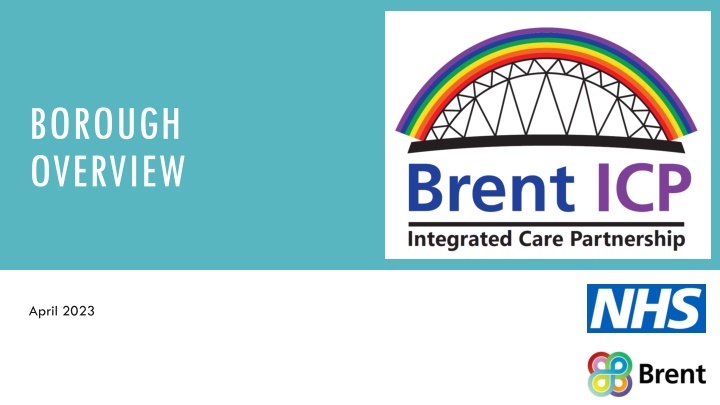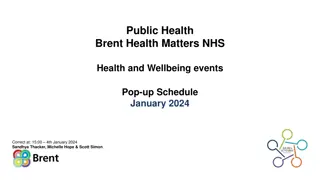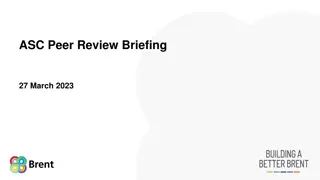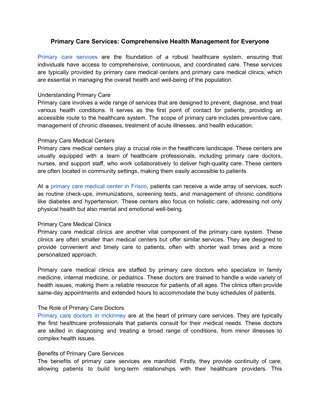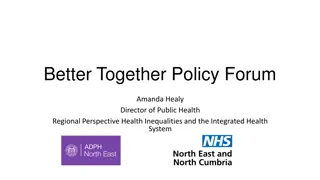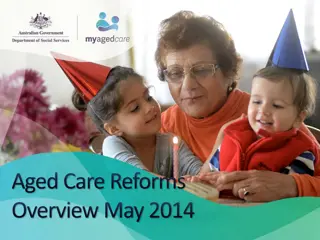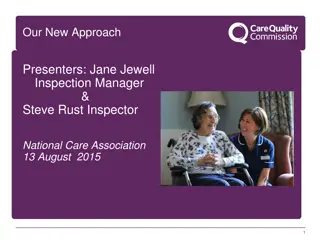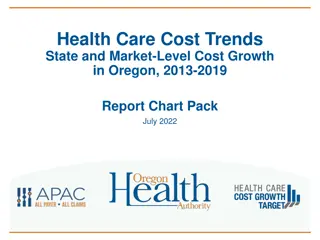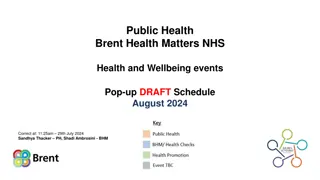BRENT ICP: Delivering High-Quality Health and Care Services
Addressing health inequalities in Brent with a focus on partnership, community involvement, and improving access to diverse populations. The Brent Integrated Care Partnership (ICP) aims to provide personalized services and better outcomes for residents, emphasizing collaboration and understanding the unique needs of the community.
Download Presentation

Please find below an Image/Link to download the presentation.
The content on the website is provided AS IS for your information and personal use only. It may not be sold, licensed, or shared on other websites without obtaining consent from the author.If you encounter any issues during the download, it is possible that the publisher has removed the file from their server.
You are allowed to download the files provided on this website for personal or commercial use, subject to the condition that they are used lawfully. All files are the property of their respective owners.
The content on the website is provided AS IS for your information and personal use only. It may not be sold, licensed, or shared on other websites without obtaining consent from the author.
E N D
Presentation Transcript
BOROUGH OVERVIEW April 2023
BRENT INTEGRATED CARE PARTNERSHIP (ICP): AN INTRODUCTION TO THE PARTNERSHIP Population summary Vision for our residents We will deliver high quality and best value for all of our core health and care services for the people of Brent. We will achieve this by: London s seventh most populous borough, with a population of 329,000. A median age of 36, four years below the average for England. Addressing health inequalities by delivering services in a way that responds directly to the needs of our communities London and the UK s second most ethnically diverse borough. 64% of the population is from Black, Asian and other minority groups and 55% of residents were born overseas. The largest single group is the Indian population (fourth largest in London), who comprise 17% of residents. Improving access to our services by increasing our workforce and appointments available at a time that suits people Personalising services by bringing a wide range of services together at neighbourhood level wrapped around the needs of residents The second largest Hindu population in England and Wales, and the tenth largest Muslim population (as a percentage of the population). Supporting people to maximise their independence, and caring for people closer to home Over 149 languages are spoken and 37% of residents do not have English as their main language (second highest proportion in London). Partnership Principles Brent has a recognisable geographical inequality north and south of the North Circular Road. There is higher population density and less open space in the south than in the north. Disparities between these areas became more apparent during the pandemic; Church End suffered one of the highest death rates in the country. 1. Everything we do should have the resident at its heart. 2. We cannot tackle the current or future challenges of the health and care system as individual organisations, we must work together. 3. We will develop a deep understanding and connection with communities. 2
OUR HEALTH STORY IN BRENT Addressing historic and new inequalities in Brent is core to our work. We recognise we can only do this by working together as partners and with communities to understand and address the causes and impact of inequalities on health and wellbeing. 3
OUR PARTNERSHIP JOURNEY 2022 2023 June: formal transition from Brent CCG to NWL ICB Aug: children priorities added to our transformation work May Jan May July Oct Jan The response to Covid saw a new and deeper approach to partnership, with a desire in January to embed a new way of working following this experience Key transformation priorities launched or refreshed: Primary Care, Mental Health, Community services & inequalities; alongside the launch of the Brent Integrated Neighbourhoods Teams work. Continued progress made across our priorities and evaluation of the work to date completed in key areas. VCSE representatives and community champions attending the ICP and transformation executives. We will be holding our third away day to provide an update and get renewed support for our Neighbourhoods and Childrens work. In parallel a stocktake and renewal of priorities is taking place alongside a focus of building connections with the ICS. A new vision had been set and new partnership structures/meetings launched including joint DMTs & partnership away days A system approach to clinical leadership and support is launched, onboarding ICP Clinical Leads, working alongside PCN CDs taking on ICP priority areas. 4
Brent: Priorities and governance Transformation priorities Operating model how we work in partnership We have developed a leadership model that brings together all parts of the system as One Brent so that we can speak with one voice for the benefit of our residents. We have established governance, partnership meetings, partnership teams and support to make this happen at all levels, as outlined in the diagram below: 1. Tackling health inequalities Increasing access to services to support people to live healthier, happier lives by expanding the Brent Health Matters model to tackle other population health priorities. 2. Strengthening primary care Building capacity and capability to tackle the challenge of rising demand via a programme of improvement focused on access, workforce development, at-scale working, LES rollout and coverage, and CYP priorities. 3. Developing community care Providing integrated community services at Neighbourhood level that are developed in consultation with service users and modernise services by encouraging new ways of working, reducing overlap and improving efficiencies. 4. Better mental health and wellbeing Supporting a more proactive and preventative approach to mental health via cross-system working. System Leadership Transformation Professional Leadership Accountable TRANSFORMATION EXECUTIVES (MONTHLY) ICP BOARD (QUATERLY) PRIMARY CARE EXECUTIVE (MONTHLY) Responsible ICP EXEC GROUP (EVERY 2 WEEKS) CROSS PARTNERSHIP WORKING GROUPS BRENT ICP CLINICAL LEADS Deliver CDs and wider GPs working with PCNs and wider practices (GP Forum) CROSS PARTNERSHIP DELIVERY TEAMS BOROUGH SLT & JOINT DMT Enable Training hub and OD support (e.g. clinical effectiveness) OD PROGRAMME CENTRAL BI & PMO 5
PRIORITY 1: TACKLING HEALTH INEQUALITIES TACKLING HEALTH INEQUALITIES Clinical: work with PCNs and the community to deliver prevention and management to people in Brent that do not normally access healthcare services. Manage a patient advice line. Mental health and wellbeing: co-design culturally appropriate awareness and training sessions with communities and VCS Community: implement local action plans with 5 Brent Connect areas and develop action plans for thematic remits with statutory services. Committed to deliver at least 5 community events per month. Social Prescribing: develop a holistic model, aligned to the emerging neighbourhood model Engagement & comms: develop targeted comms assets to promote events, vaccinations and health & wellbeing offer to communities. Co-develop translated comms assets with community leaders and work with them to ensure appropriate distribution. Communicate and engage with communities through a range of channels. Capacity development in the community: provide grants to community organisations to support health and wellbeing in the community. Work with VCS to promote health education and awareness in the community. Children: vaccinations, oral health and pediatric hub development 6
PRIORITY 2: STRENGTHENING PRIMARY CARE Strengthening Primary Care Primary Care Access: Implementation of key changes to improve access, including: making it easy to register and book an appointment, implementation of digital and telephony solutions, developing triaging capabilities through reception staff training, and expanding out of hours capacity. Children and Young people: developing an effective Asthma pathway Community pharmacy: Increase public awareness of support available through Community Pharmacists and improve collaborate working between GP practice teams and Community Pharmacies to deliver the Community Pharmacy Consultation Service. Integrated Working at Scale : Improve collaborative working between GP practice teams, partner organisations and the community District Nursing teams to support better assessment and care for patients who are housebound with a physical healthcare need. Population Coverage of Local Enhanced Services : providing full population coverage delivery through collaborative working by practices within each PCN. 7
PRIORITY 3: DEVELOPING COMMUNITY CARE DEVELOPING COMMUNITY CARE Heart Failure (HF): Co-design of the Brent Heart Failure pathway with reviewed and agreed KPIs and aligned measurable outcomes to be fed in to the NWL Business Case process Respiratory: Co-design of the respiratory service specification and the launch of a COPD Case Management pilot Frailty: We have designed a holistic model of care for frail and complex patients, building upon best practices in Brent with a joined-up approach implementation planned for FY 23/24. Rapid Response Hospital at Home: We will aim provide a more person-centred care experience for individuals in their own home, avoiding the risks of healthcare-acquired infection, deconditioning and unnecessary long stays. Rehab and Rehab and Reablement: Developing a new 19 bedded Rehabilitation ward at Willesden Hospital which fully opened on 20th March and development of the next stage of the D2A pathway. Integrated Neighbourhood Team Development: Developing integrated hyper-local teams to support key communtiuy needs and developing a Health and Social Care Superhub model for the 5 Connect areas in Brent. Children Specialist Services: Neurodiversity Pathway, Speech and Language Therapies, and Integrated Neighbourhood Model. 8
PRIORITY 4: BETTER MENTAL HEALTH AND WELLBEING BETTER MENTAL HEALTH AND WELLBEING Access, Demand and Pathways: Increasing access of IAPT services and increase in SMI Physical Health Checks through stronger collaboration with General Practice, upskilling of the community workforce and implementation of the Make Every Contact Count approach. Employment: improve links and communication across the system (Health, DWP and Service Providers), work with employers to support more people with Mental Health issues in to work, and support people with Mental Health issues to identify and apply for employment opportunities. Housing and Accommodation: Implement the new housing GP referral form to support more effective pathways, develop an integrated MH commissioning plan which meets holistic needs, prototype new approaches to working with landlords to support people with mental illness to maintain tenancies and provide better support for Rough Sleepers. Children and Young People: Co-produce a shared vision and commitment to Children and Young People in the borough, and develop clear pathways to support this. Deliver on key CYP priorities including SEND improvement, development and implementation of local Thrive models for Brent, and expansion of Mental Health Support in Schools. 9
THE ICP EXECUTIVE TEAM Robyn Doran (Partnership Chair) Phil Porter (Partnership chair) Strategic Director of Community Wellbeing, Brent Council CNWL Simon Crawford Dr Mohammad Haidar Borough Medical Director, NWL ICB Tom Shakespeare Brent ICP Managing Director Jackie Allain Deputy Chief Executive, London North West Director of Operations CLCH Dr Melanie Smith Jonathan Turner David Hunter / Caroline Kerby Primary Care Network Management Representative Kristine Wellington Community Voluntary Sector Representative Bea Director of Public Health, Brent Council Community Champion representative Borough Director, NWL ICB 10
OUR ICP LEADERSHIP TEAM Mohammad Haidar Borough Medical Director, NWL ICB Jonathan Turner Borough Director, NWL ICB Tom Shakespeare Brent ICP Managing Director Partnership management team: Delivering Community Care Better Mental Health and Wellbeing Strengthening Primary Care Tackling Inequalities Partnership priorities: Improving outcomes for children Partnership Chairs: Mohammad Haidar and Jackie Allain Simon Crawford and Jackie Allain Phil Porter and Robyn Doran Mohammad Haidar & Robyn Doran Fana Hussain Assistant Director of Primary Care Steve Vo Sarah Nyandoro Head of Mental Health, Learning Disabilities and Autism Nipa Shah SRO: Assistant Director Integration and Delivery Head of Brent Health Matters & Inequalities Mike Edbury Lyndsey Williams Sumi Mukherjee MC Patel Clinical leads: Anne Murphy (Children s Clinical Lead) Hasmita Patel (Professional Lead) Nigel De Kare-Silver Intkhab Raja Ajit Shah Nigel De Kare-Silver Sumi Mukherjee Ajit Shah PCN Leads: Jahan Mahmoodi Subash Jayakumar Mahima Gattani Subash Jayakumar VCSE Leads: Julian Lloyd Danny Maher Anne Marie Morris Kristine Wellington
WHAT DO WE NEED FROM THE ICS? Funding, resources and capabilities Strategic support and focus Levelling up funding: Action on workforce: Brent ICP is leading the development of a cross-provider group to develop a proposal for a recruitment and retention premium for Occupational Therapists and then subsequently health visitors and mental health practitioners. A systematic and opaque approach to assessing the need for and delivering levelling up funding across NWL; including working with Brent to address levelling up issues that have been identified (e.g. Mental Health services). Health inequalities and population health Continued partnership working with the NWL to tackle local inequalities in Brent. Brent ICP is seeking to do this by ethnicity, deprivation and disability within the latter looking at LD and SMI would seem a reasonable first step. Improvement in how we monitor and track improvements in health equity by looking at all performance indicators through an ethnicity and deprivation lens. 12
